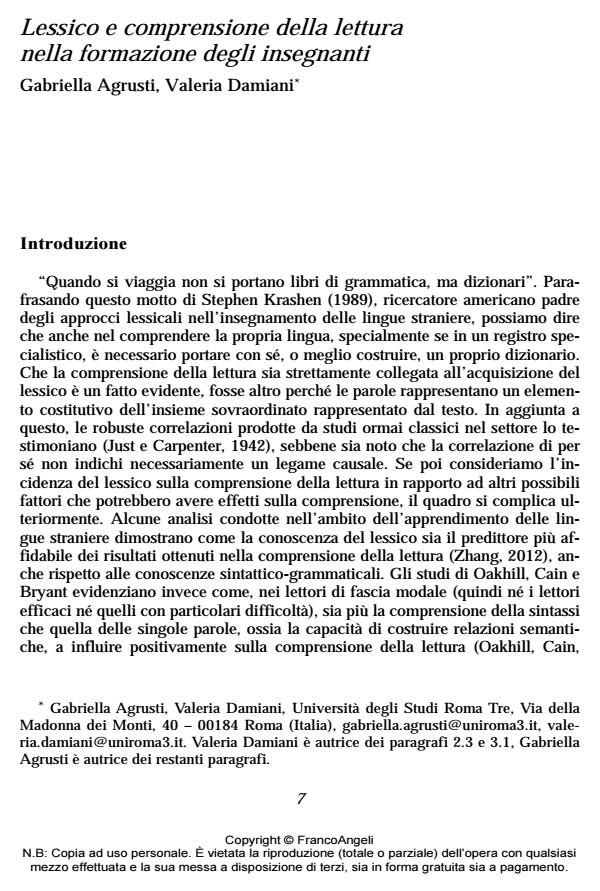Vocabulary and reading comprehension in teacher education
Journal title CADMO
Author/s Gabriella Agrusti, Valeria Damiani
Publishing Year 2014 Issue 2014/1
Language Italian Pages 18 P. 7-24 File size 90 KB
DOI 10.3280/CAD2014-001003
DOI is like a bar code for intellectual property: to have more infomation
click here
Below, you can see the article first page
If you want to buy this article in PDF format, you can do it, following the instructions to buy download credits

FrancoAngeli is member of Publishers International Linking Association, Inc (PILA), a not-for-profit association which run the CrossRef service enabling links to and from online scholarly content.
It is widely recognized that vocabulary is closely tied to reading comprehension, and correlations between these two constructs, even if differently defined across studies, vary between .6 and .8. But correlation is not a causal relationship, and does not provide enough basis for a comprehensive conceptual explanation. Reversing the problem, it is still highly controversial whether specific interventions on vocabulary instruction can massively influence reading comprehension, and this particularly in adult learners, indicating that a lot remains to be investigated in the field of vocabulary knowledge transfer to other components of language proficiency. Recent studies showed that the weak link for understanding this apparent gap lies probably in the way vocabulary is assessed. This article shows the results of a two-year research project aimed at assessing future teachers’ vocabulary related to school everyday life issues, focussing both on language for specific purposes and on general language. In particular, different typologies of reading comprehension tests, of vocabulary tests (receptive and productive), on paper and pencil and on computer-based administrations, were adopted and compared.
Keywords: Vocabulary, reading comprehension, teacher education, assessment, error analysis.
Gabriella Agrusti, Valeria Damiani, Lessico e comprensione della lettura nella formazione degli insegnanti in "CADMO" 1/2014, pp 7-24, DOI: 10.3280/CAD2014-001003